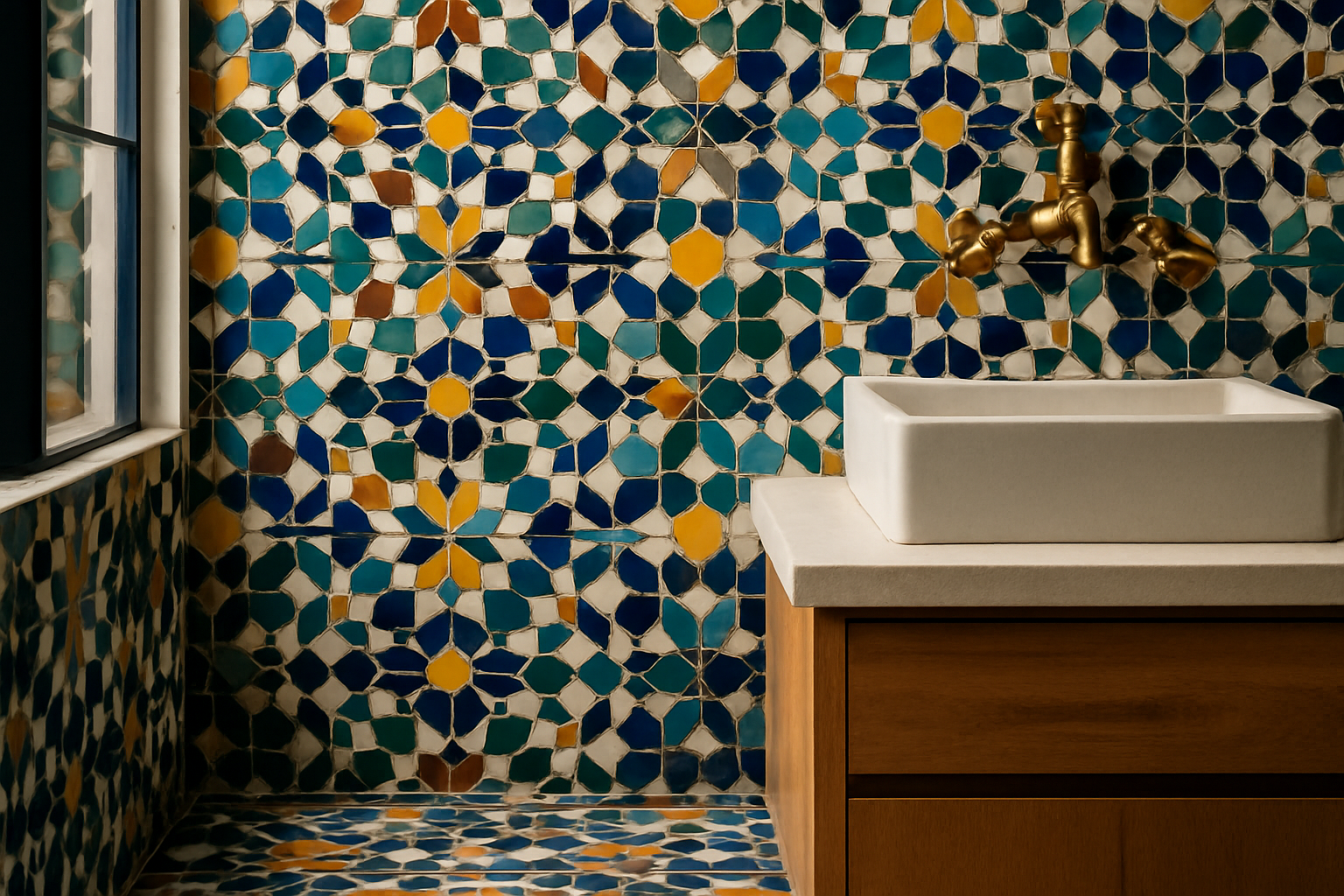The Renaissance of Moroccan Zellige Tiles in American Homes
A vibrant mosaic of azure and turquoise catches the eye as you enter the sun-drenched kitchen. The intricate patterns of handcrafted tiles transport you to the bustling bazaars of Marrakech, yet you're standing in a modern American home. This is the magic of Moroccan Zellige tiles, a centuries-old art form experiencing a remarkable revival in contemporary interior design. As homeowners seek to infuse their spaces with character and global flair, these timeless tiles are emerging as the go-to choice for those craving a touch of exotic elegance.

The Ancient Art of Zellige Tilework
Zellige, derived from the Arabic word for “little polished stone,” has its roots in the intricate geometric patterns of Islamic art. This tile-making tradition dates back to the 10th century in Morocco, where skilled artisans developed techniques to create stunning mosaics for palaces, mosques, and fountains. The process of creating Zellige tiles remains largely unchanged, with craftsmen shaping, glazing, and firing each tile by hand.
The allure of Zellige lies in its imperfections. Unlike machine-made tiles, each Zellige piece is unique, with slight variations in color, texture, and shape. These subtle differences create a dynamic surface that catches light in captivating ways, bringing walls and floors to life. The tiles are typically small, ranging from 2 to 6 inches, allowing for intricate patterns and designs that can transform any space into a work of art.
Zellige in Contemporary American Design
In recent years, American designers have embraced Zellige tiles as a way to add texture, color, and cultural depth to interiors. The versatility of these tiles allows them to complement a wide range of design styles, from modern minimalist to eclectic bohemian. Their handcrafted nature appeals to those seeking authenticity and a connection to traditional craftsmanship in an increasingly mass-produced world.
One of the most popular applications of Zellige in American homes is as a kitchen backsplash. The reflective quality of the glazed tiles brightens up the space, while their varied tones add visual interest. In bathrooms, Zellige tiles create a spa-like atmosphere, transforming showers and accent walls into shimmering oases. Some homeowners are even using Zellige to create statement fireplaces or to clad entire accent walls in living rooms and entryways.
Color Trends and Pattern Play
While traditional Zellige tiles often feature intricate geometric patterns in blues, greens, and earth tones, contemporary American interpretations are pushing the boundaries of color and design. Monochromatic installations in shades of white, grey, or black offer a sophisticated, modern take on the classic tile. For those seeking bold statements, jewel tones like emerald green, sapphire blue, and ruby red are gaining popularity.
Pattern-wise, designers are experimenting with unconventional layouts. Herringbone and chevron patterns give a fresh twist to the traditional square grid, while ombre effects created by gradually changing tile colors produce stunning visual impacts. Some homeowners are opting for a more minimalist approach, using large format Zellige tiles to create a sleek, uniform look with subtle texture.
The Practicality of Zellige in Modern Homes
Beyond their aesthetic appeal, Zellige tiles offer practical benefits that make them well-suited for contemporary living. Their durability and resistance to wear make them ideal for high-traffic areas. The glazed surface is easy to clean and maintain, a crucial factor for busy households. Additionally, the reflective properties of Zellige can help brighten up spaces, making rooms feel larger and more open.
However, it’s important to note that installing Zellige tiles requires skill and patience. The irregular edges and handmade nature of the tiles mean that installation can be more time-consuming than with standard tiles. Many homeowners opt to work with experienced installers who understand the nuances of working with Zellige to ensure a flawless finish.
Sustainability and Artisanal Revival
The rise of Zellige in American homes aligns with a growing interest in sustainable and ethically produced home decor. These tiles are made from natural materials and crafted using traditional techniques that have been passed down through generations. By choosing Zellige, homeowners are not only adding beauty to their spaces but also supporting artisanal communities and preserving cultural heritage.
This renewed interest in Zellige has led to a revival of the craft in Morocco, with young artisans learning the trade and bringing new ideas to the ancient art form. Some American companies are even partnering with Moroccan workshops to create custom Zellige collections, bridging traditional craftsmanship with contemporary design sensibilities.
The Future of Zellige in American Interiors
As the popularity of Zellige tiles continues to grow, we can expect to see more innovative applications and designs. From outdoor spaces to commercial interiors, the versatility of these tiles opens up endless possibilities. The trend is also inspiring a new generation of American artisans to explore tile-making techniques, potentially leading to unique, locally-produced interpretations of this Moroccan art form.
The renaissance of Zellige tiles in American homes is more than just a fleeting trend; it represents a deeper shift towards thoughtful, globally-inspired design. By incorporating these handcrafted tiles into their spaces, homeowners are not just decorating—they’re telling a story, one that spans centuries and continents. As we continue to seek ways to make our homes more personal and meaningful, Zellige tiles offer a beautiful bridge between past and present, tradition and innovation.





